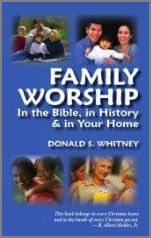Guest post by Ann Dunagan from The Mission Minded Life, author of The Mission-Minded Child & The Mission-Minded Family.
Mission-Minded Hospitality – Highlights from Elisabeth Elliot’s Childhood
(An excerpt from The Mission-Minded Child)
Elisabeth Howard was raised as a mission-minded child. While growing up, her father (Philip E. Howard Jr.) led the family in daily times of prayer, which included singing hymns together (including every verse) and reading the Bible. Elisabeth’s parents viewed hospitality as a “matter of obedience” and believed “it was important for their children meet Christian men and women from all walks of life, to hear firsthand their stories of the faithfulness of God, and to enjoy the privilege of asking them questions.” The family’s hospitality (especially towards other missionaries) was often expected by their church; however, instead of feeling the weight of such an obligation, Elisabeth’s mother, Katherine, told young mothers, “You don’t understand what you’re missing out on. You’re missing out on some wonderful things!” Of the six children in her mission minded family, Elisabeth and four of her siblings became missionaries.
_________________________________________________________________________________
Here’s an excerpt of an interview I did with my daughter (when she was 14 years old) about mission-minded hospitality. (An excerpt from The Mission-Minded Family)
From My Children’s Perspective: “Company’s Coming!”
–By Christi Dunagan, age 14
MOM: Christi, we have company over often, including many missionary families, and you are a tremendous help. From your perspective as my teenage daughter, and from a practical point of view, what does “Missionary Hospitality” mean to you?
CHRISTI: Well… it means I’ll have to do more dishes (without complaining), wash my sheets (making sure I’ve got matching pillowcases), clean my closet (usually two-feet-deep in clothes), straighten my little sister’s disasters, get rid of all my junk in the bathroom… and sometimes it’s got to be done really fast because usually our company’s coming any minute!
It means that after a “sit-down, nicer-than-normal” dinner, I’ll be in charge of keeping all the little kids quiet while the adults are visiting, and then, when it’s time for bed, I’ll “get” to sleep on the floor in my little brother’s room (with a smile)!
When people from Africa or India come over, they usually think my bedroom is like a royal guest house! It reminds me of how much I have to be thankful for and how much I usually take for granted.
Sometimes our visitors have never seen a dishwasher or a grocery store. One time, we all were laughing so hard with our Ugandan friend when he couldn’t figure out how a person could fit inside the little talking drive-through window at Burger King! (Our national friend was laughing harder than any of us!) Other times, village guests have stood watching in amazement through an entire washing machine cycle – with the lid up!
It can be interesting, and challenging, to hear exciting stories about how people have helped orphan children or about how missionaries have started Bible schools. It’s fun also to have special speakers from church stay at our house (like groups from “Teen Mania” or “Masters Commission”). Many times, ministers have really encouraged me to want to do something more for God with my life.
When we welcome others into our homes, especially other missionaries, it’s not just a lot of work… and an exercise in patience… it’s actually missionary training!


 A typical morning lately at our house resembles something like this…a little potty training, lots of cloth diaper changes, dealing with a difficult stage in child training a toddler, and all!
A typical morning lately at our house resembles something like this…a little potty training, lots of cloth diaper changes, dealing with a difficult stage in child training a toddler, and all!



 Guest post by Jessica, mother of two, who is joyfully serving alongside her husband as they minister as international church planters in Eastern Europe.
Guest post by Jessica, mother of two, who is joyfully serving alongside her husband as they minister as international church planters in Eastern Europe.